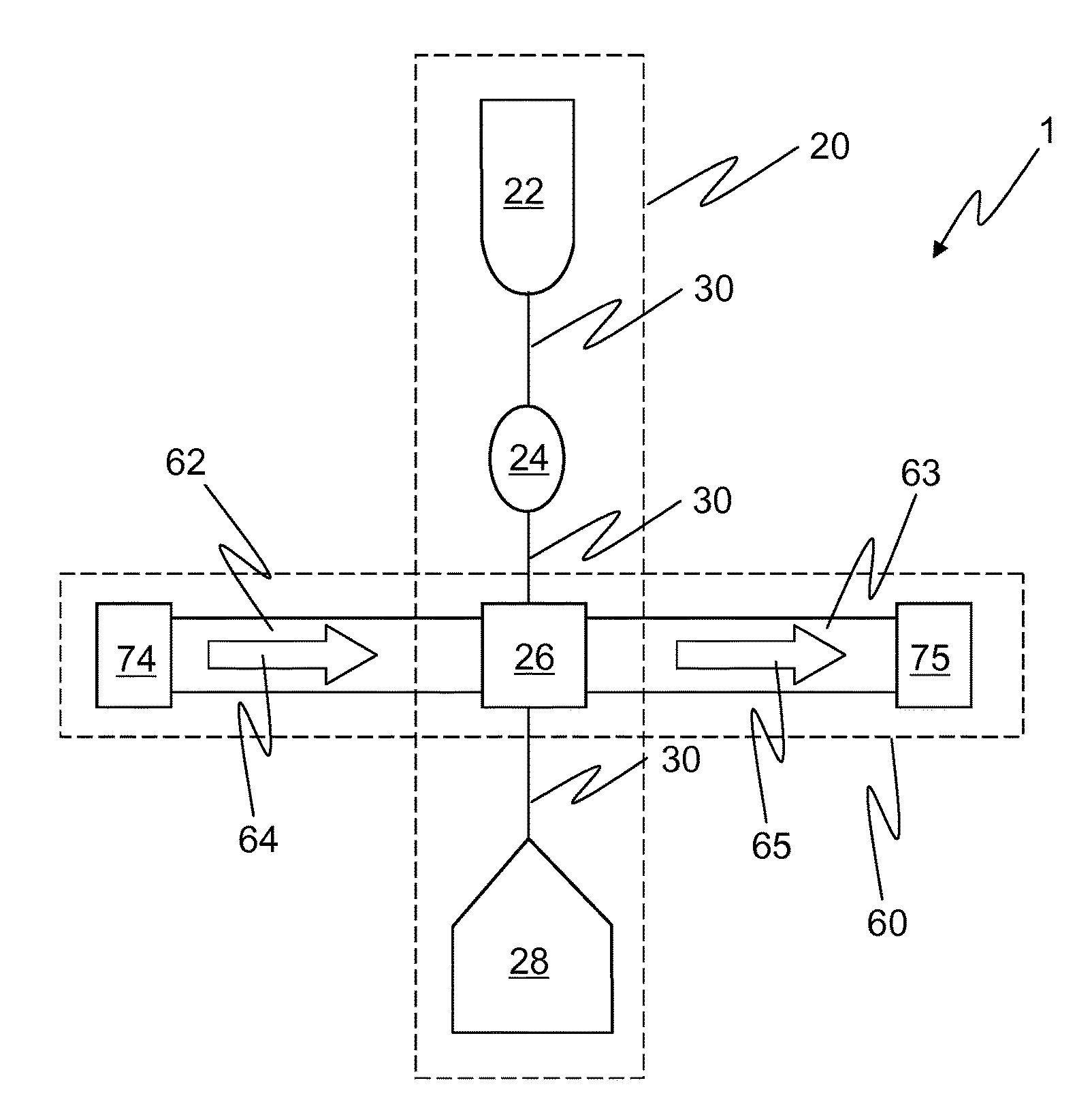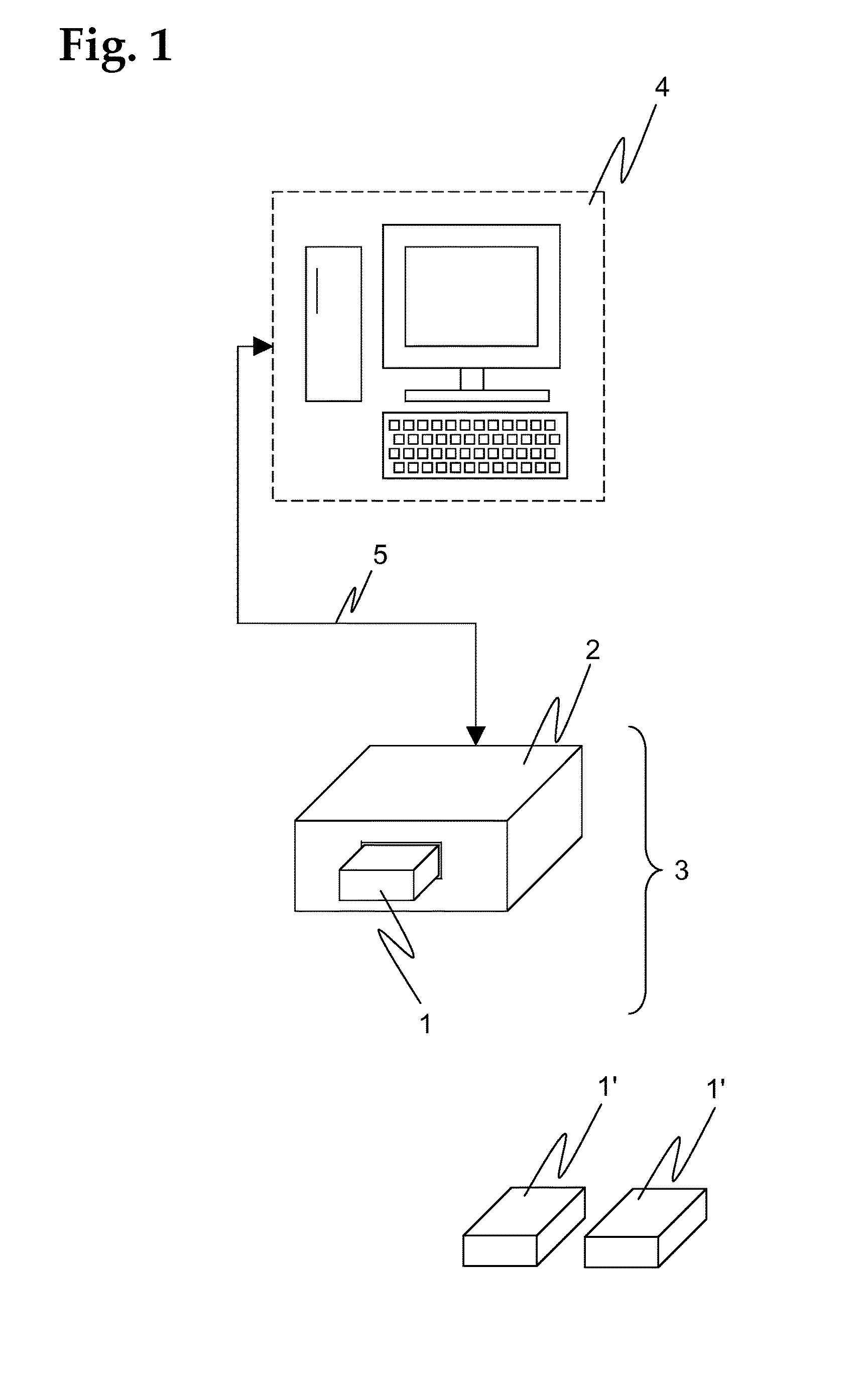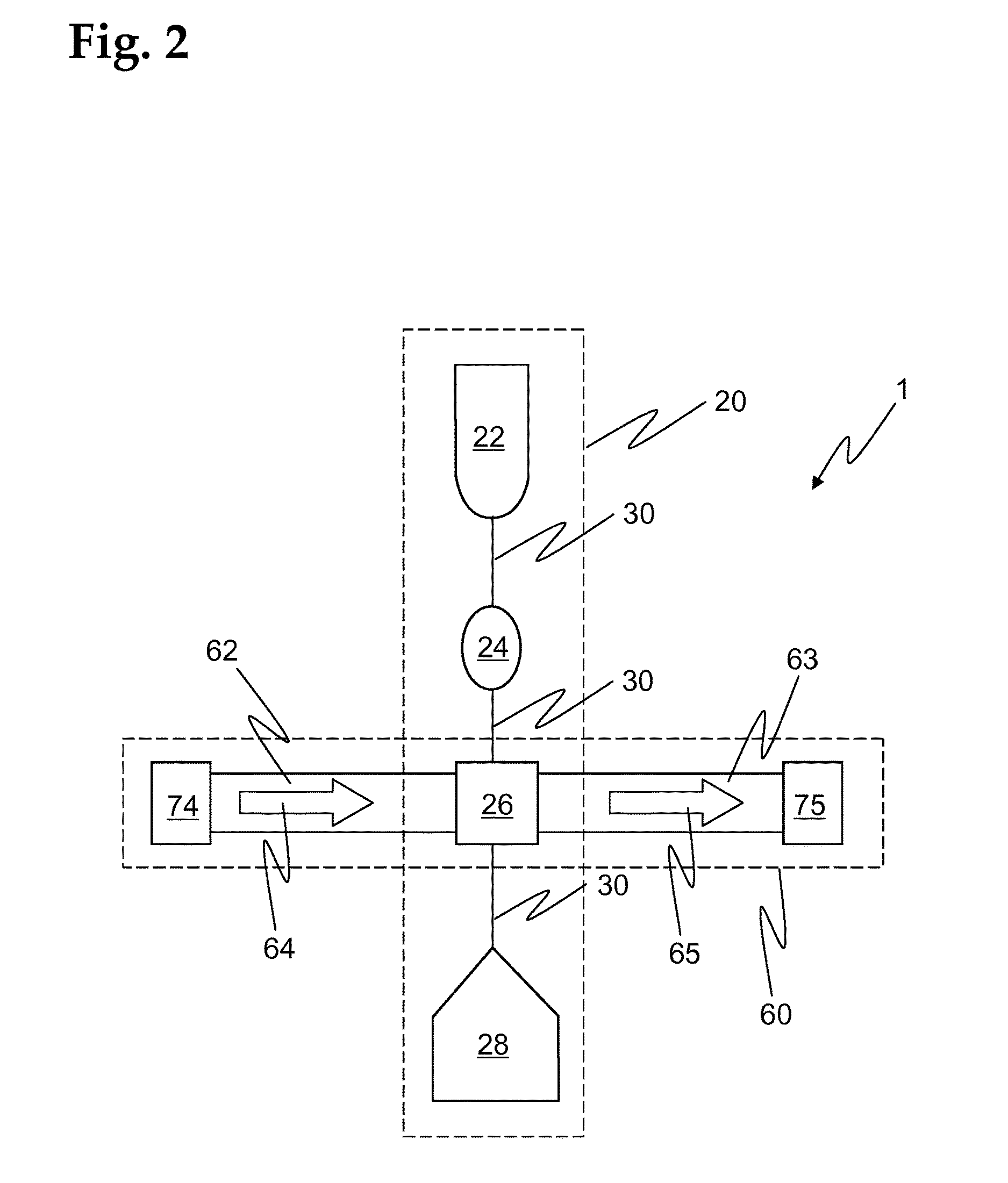However, they also have the
disadvantage of being expensive, and requiring well trained personnel for operation.
However, since such devices require a physiological sample from a patient, said samples have to be transported to the
medical laboratory, where the analysis is going to be performed, and have to be handled and stored appropriately.
Current point-of-care diagnostics devices are often not accurate or sensitive enough to be relied on as the only source of information.
One challenge therefore is to develop point-of-care diagnostics devices that are sensitive and accurate enough to provide an equal alternative to clinical laboratories.
While these microfluidic chips are powerful, they are still expensive to manufacture in
silicon, and they require an expensive high-end
fluorescence microscope for optical
signal acquisition and quantification.
Despite their many benefits, high-sensitivity fluorescence detection systems also have several limitations.
Additionally, many of the described systems have very limited fluidic control, requiring trained personnel for pipetting, or pipetting robots, or active pumping.
Furthermore,
biochemical reactions on surfaces and in large reaction vessels, have large
diffusion distances, causing them to operate in a transport-limited regime.
These combined limitations mean that
highly sensitive fluorescence detection is uncommon in point-of-care diagnostics.
As a consequence a large fraction of the excitation power usually remains unused, thus artificially decreasing the local
power density of excitation for the fluorophores or, its corollary, increasing the total amount of excitation power required.
This generates a large amount of unwanted light that decreases the overall
signal to
noise ratio.
The use of very high quality filters might become necessary to achieve acceptable S / N, thus increasing the total cost of the system.
Third, the existence of excitation light outside of the detection regions can be detrimental to the S / N through the generation of parasitic fluorescence emission.
Nevertheless, such a system does also suffer from two main drawbacks.
First of all, the absence of appropriate filtering functions in the microfluidic device imposes the use of pre-processed
biological fluids, thus excluding the use of the device outside of the laboratory.
Second, the microfluidic
layers need to be pealed before rinsing and imaging the fluorescent spots.
These operations are prohibitive to applying this method in a point-of-care device.
In the disclosed
microfluidic chip, the high degree of photonic integration (secondary
laser source,
grating and waveguides) creates a high level of complexity in the
chip fabrication that is not favourable for the use of such microfluidic chips in a practical point-of-care
scenario.
First the in-print of DBG in PMMA is a rather fault intolerant process that is complicated to perform consistently in
large series.
Since the later display high sensitivity to fabrication, environment and operation conditions, low measurement accuracy has to be expected.
This rules out the possibility of using such a system in a disposable chip based point-of-care
scenario.
A second major drawback comes from the disruption of the waveguide by the microfluidic channel.
In these conditions a significant amount of excitation light is expected to emerge from the sidewalls of the
microfluidic chip and then be collected by the final imaging system, which considerably decreases the signal-to-
noise ratio due to parasitic scattering.
Since the loss of light is also caused by scattering of the light in the heterogeneous sample liquid, the resulting attenuation effect of the microfluidic channel is not reproducible, which renders the remaining excitation light essentially useless for further quantitative measurements.
The dimensions and materials needed for the disclosed system are unsuited for current
mass fabrication methods in plastics such as
injection moulding.
With
whole blood as sample however there is a high chance to clog the interaction volume, since
whole blood filtering cannot always remove all cellular components.
Implementing the described method into passive microfluidic systems is very difficult.
First, the use of a slab waveguide / one-dimensional guiding layer has a negative effect on the overall excitation efficiency, which can be inferior by orders of magnitude, due to the lack of lateral confinement.
Thus the disclosed setup can be expected to be unsuitable and not being properly functioning for longer distances between excitation light entry and assay site, particularly because also detection takes place via the slab waveguide, further decreasing the
available light signal.
Second, the use of materials such as SiN and SiO2 is prohibitive for the realization of inexpensive disposable devices.
This approach is not only very inefficient with respect to the total amount of fluorescence light emitted, it does not provide any
spatial discrimination.
This approach might therefore suffer from unwanted signal emanating from regions outside of the reaction region.
It also prohibits the use of such a system for multiplexed applications, since any distinct assay area would couple its fluorescence signal into the same waveguide layer, without the possibility to distinguish certain signal parts from each other.
 Login to View More
Login to View More  Login to View More
Login to View More 


